Information
Photography
Syndicate This Blog
Sunday, April 23. 2017
Motorcycle Racing at Gratz Fairgrounds
Yesterday I attended my first in-person motorcycle race as a spectator at the Gratz Fairgrounds in Gratz, PA. This is a cinder flat track which makes for an exciting, if a bit dusty show. There were racers there of ages from 4 to 80, racing everything from highly customized dirt bikes ideal for the track to barely customized street bikes with dirt tires with engines from tiny 50cc 'chainsaws' up to big heavy harley motors.
Racing was held by Baer Motorsports, which has other races on its schedule this year but nothing like Gratz. At only $5 per person and with racing running from 11:00 until 19:00, this was a great show.
Browsing other videos of racing at Gratz, one of my favorites is this one, which shows what the track is like from a rider's perspective:
Definitely looking forward to going to this one again next year, with better camera equipment.
Racing was held by Baer Motorsports, which has other races on its schedule this year but nothing like Gratz. At only $5 per person and with racing running from 11:00 until 19:00, this was a great show.
Browsing other videos of racing at Gratz, one of my favorites is this one, which shows what the track is like from a rider's perspective:
Definitely looking forward to going to this one again next year, with better camera equipment.
Tuesday, July 5. 2016
Buffalo Valley Rail Trail
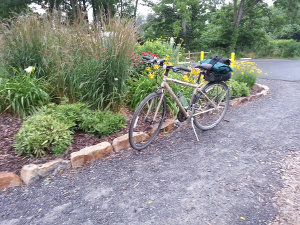 Getting back into bicycle riding as I work on getting into shape. My bicycle needed a rear tube replacement and a good cleaning to remove the cat hair from the gears. As a 'return to cycling' event and a July 4 adventure, Christine and I rode the Buffalo Valley Rail Trail on Monday.
Getting back into bicycle riding as I work on getting into shape. My bicycle needed a rear tube replacement and a good cleaning to remove the cat hair from the gears. As a 'return to cycling' event and a July 4 adventure, Christine and I rode the Buffalo Valley Rail Trail on Monday. Only the ends are paved, but the packed gravel in the middle is reminiscent of the lane at home, so it wasn't uncomfortable. Although at first I felt my bike was a little stiff for gravel, by the end I realized it was the rider not the bike that was stiff. A beautiful ride in the country with farms and fields on either side and gentle slopes, even for a rail trail. We rode in light rain and mist on the return leg, but my gear kept me dry and it proved rather refreshing.
Longer than I expected; about 10 miles each way, as they finished more parts of it than when I had investigated it in the past. 20 miles was probably a bit more than I should have tackled after having not ridden in years, and led to being quite sore this morning.
Saturday, June 25. 2016
Phone Screen Replacement
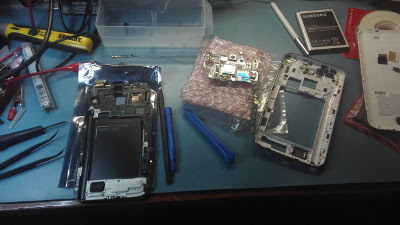 After years of using an otter case on my Samsung Note II phone, figuring it was near the end of life and wanting to enjoy a slim phone for a while before retiring it, I started using it without the case. I enjoyed having a phone that actually fit in my pocket, but alas the inevitable happened, I dropped it and the screen broke. This older phone still fit my needs however, so I was loathe to replace it. I've always wanted to tear one of these apart, so instead of throwing it away, I decided to replace the screen.
After years of using an otter case on my Samsung Note II phone, figuring it was near the end of life and wanting to enjoy a slim phone for a while before retiring it, I started using it without the case. I enjoyed having a phone that actually fit in my pocket, but alas the inevitable happened, I dropped it and the screen broke. This older phone still fit my needs however, so I was loathe to replace it. I've always wanted to tear one of these apart, so instead of throwing it away, I decided to replace the screen.Replacing the screen on these isn't particularly easy for the unexperienced. There's many small parts and screws, the components are sensitive to ESD, and to get a good job without wrecking the case proper tools are needed. Fortunately I'm an N scale train hobbyist; these have similarly sized components and similar issues dealing with tiny electronic components.
Ifixit has a guide for replacing the screen on the Samsung Note II which I used as well as an order page for the various parts. It actually works the first time, I have no extra parts on my workbench, and my new screen is unbranded, which is a rather cool side effect of the surgery.
Thursday, December 17. 2015
Late Fall Riding Views
 |
| From Motorcycle Adventures |
It is a great time of year to ride on those narrow back country single lane pavement and packed dirt roads, as normally the dense trees along many of these roads are particularly effective at blocking the view. Slower speeds involved on such roads allow longer riding times between warm up stops. Care does need to be taken as such roads are poorly maintained, particularly an issue if it is below freezing and/or the ground is frozen, which makes these roads a better late fall choice than winter.
Monday, February 16. 2015
AFX Giant Raceway
 |
| From Slot Cars |
 |
| From Slot Cars |
It took a while to set up, a few decorative rocks to tweak the heights so the car drivers don't lose their heads, and quite a bit of testing and tweaking the many feet of seams, twists, and turns to get running smoothly. As such I certainly wouldn't recommend this as a 'first' set lest one get discouraged, but once set up it is quite amazing. With some extra landscaping pieces from my collection of HO scenery, and the included pit and grandstand displays which are a nice extra touch, this set has certainly lived up to my expectations.
Thursday, January 1. 2015
CB Channel 38 LSB
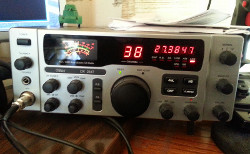 As I study for my Ham Radio Technician exam, I picked up a Galaxy DX 2547 CB base station and set up an I-Max 2000 antenna in the back yard. Being near a highway, I figured I would at least pick up some truck traffic and see if there's anything interesting going on nowadays on the unlicensed CB airwaves before I'm ready to expand into licensed spectrum.
As I study for my Ham Radio Technician exam, I picked up a Galaxy DX 2547 CB base station and set up an I-Max 2000 antenna in the back yard. Being near a highway, I figured I would at least pick up some truck traffic and see if there's anything interesting going on nowadays on the unlicensed CB airwaves before I'm ready to expand into licensed spectrum.There's no shortage of the expected truck traffic, which is sometimes interesting. And there's something called the 'super bowl' on channel 6 of people who use ridiculous overpowered transmitters to communicate over long distances. CB is very wild west nowadays as far as traffic and enforcement; rules which used to be ironclad like channel 9 being for emergencies are now widely ignored. Whether this is good or bad is another argument, but at least the frequencies are being used.
My first CB radio supporting single side band, I did some research on line which indicated SSB in the CB space is usually used on channels 35-40, and English traffic is usually Lower Side Band. Hanging out in these channels, there is indeed much interesting traffic. Today for example I was picking up long range DX traffic between members of the World Radio Club. I'm regularly hearing traffic here between Texas, Montana, New York, Pennsylvania, etc.; but of particular interest today was traffic from Great Britain and Portugal. I also periodically pick up CW (morse code) traffic, which research indicates is often survivalists communicating with each other, although I won't know more until I learn CW. Of greater interest in the standpoint of what I would actually want to participate in, there is also some local traffic in my area on these bands.
Monday, January 27. 2014
HP 50g Graphing Calculator
 |
| From Miscellaneous |
Late in the lifespan of these devices, they became more sophisticated, with modifier keys and functions layered upon functions. This particular model, the last of HP's RPN calculators; an entry language which made it quick and easy to enter complex formulas into such devices in a format easy to make corrections; made use of the limited screen technology of the time to display graphs and formulas in a manner similar to that actually written in a paper technology of the time called textbooks.
I could not afford one of these back in these days of yore, but they are actually still produced, and quite inexpensive likely due to low demand and reduced costs replicating a design from a past decade. I purchased one for use on my electronics workbench, where it is proving handy as it has a built in store of electronics formulas and constants to do quick calculations without needing to hunt for a relevant application using the computer on the other side of the bench. Like slide rules for generations previous, some benefits still exist for users of these old technologies, providing insights into how pieces of our individual reality function. Mathematics, a man-made invention to annotate the workings of the universe, continues to provide interesting tools as in tandem they become iteratively more sophisticated.
Friday, February 8. 2013
Lego Mini Models
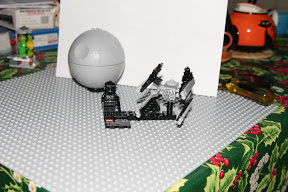 |
| From Miscellaneous |
The Tie Interceptor is one of my favorite ships from the Star Wars series of movies; one of LEGO's most prominent and long running tie-in series; and it was only $7. I've been impressed at the detail, both on the model and the mini figure. The Death Star model is rather clever too, able to hold all the parts for the models, even including a loop to fasten on the top to create a planetary system model (most of these sets include a planet or moon) or for use as an ornament.
Tuesday, January 17. 2012
RC Helicopters
 |
| My first RC helicopter; a Syma 108g From RC Flight |
I have been interested in RC aircraft for a while and was considering getting into the hobby this year. Although I was thinking airplanes, flying these around the house is surprisingly fun and not tied to good weather conditions. Helicopters I have looked at in the past were either ridiculously expensive, hard to fly, or both, but modern gyro technology now common in cell phones has made these quite reasonable in price and very stable to fly.
Now to land one of these on a train flatcar . . .
Sunday, February 6. 2011
HO Slot Car Track
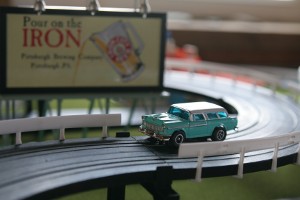 After trying out some HO slot cars in the store at English's Model Railroad Supply, I decided to try out a set. I set up an AFX 24 Hour Champions set I acquired at Kranzels Hobbies in the basement.
After trying out some HO slot cars in the store at English's Model Railroad Supply, I decided to try out a set. I set up an AFX 24 Hour Champions set I acquired at Kranzels Hobbies in the basement. Finding this to be a nice diversion from my usual digital pursuits and a complement to my model train hobby, I acquired a few more cars. After racing for a while, I found the floor was too dirty and was gumming up my cars, so I returned to English's and picked up a Life-Like Stock Car Thunder set as I remembered it having a reasonable sized footprint for a table top. This set is the one shown in my current slot car gallery photos along with some cars I've acquired along the way.
With Thunderjets, XTraction, Mega-G, Tracker T, and other types available all having varying magnets, tire, frame, chassis, and guide pin designs, racing them for best lap times is more complicated than it appears with the deceptive 'all you have is a trigger' technology. They're also surprisingly inexpensive (especially when compared to my computer and train hobbies). A friend had told me a few months ago that I should get into cars; this may not be what he meant but I'm certainly finding it fits the bill for me.
Monday, August 30. 2010
Rockhill Trolley Museum First Visit
On the 15th of August Joyce and I traveled to the Rockhill Trolley Museum. We had been planning on visiting for a long time after much positive raving about it from Ed. It certainly lived up to expectations, this video provides a taste:
No video can convey the actual experience of riding one of these, for that you will need to visit the museum.
No video can convey the actual experience of riding one of these, for that you will need to visit the museum.
Saturday, July 24. 2010
MCMRRC 2010 Raffle Layout Initial Track Test
Working on a layout for the 2010 Mifflin County Model Railroad Club to be given away as a prize. As it's in O gauge this year the challenge is coming up with an interesting layout in a small enough space to transport and at a low cost. I believe I've found a layout I'm happy with, adding a working street and a small yard for operational interest.
These aren't the vehicles being given away, just some I had handy for testing. Quite a bit of landscaping to do as well.
These aren't the vehicles being given away, just some I had handy for testing. Quite a bit of landscaping to do as well.
Thursday, April 22. 2010
7up Tank Car
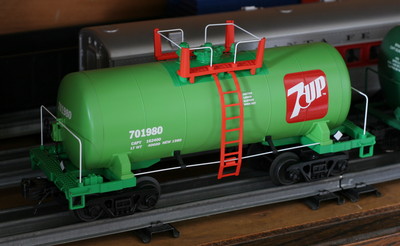 Picked up this O gauge 7up tanker car at the Great Scale Model Train Show this month.
Picked up this O gauge 7up tanker car at the Great Scale Model Train Show this month.Interesting that the number 1 (Coca Cola Co.) and number 3 (Dr. Pepper Snapple Group) beverage companies have many train cars available, but number 2 (Pepsi Co.) has none in recent production I am aware of.
Sunday, April 11. 2010
East Coast Large Scale Train Show, Spring 2010
Made this video in the layout room at the East Coast Large Scale Train Show this spring.
Also, took some pictures of the train show. The CN car in the diorama was my favorite static display. This Interstate locomotive led my favorite running train; as shown in the video the selection of cars reminded me of various trains I've enjoyed. These distinctive passenger cars in the live stream display intrigued me, if anyone knows what country they are modeled from, please let me know.
Video and photos were taken with my G1 phone, which did not turn out as nicely as I hoped. The halls were not as well lit as expected, which my phone is very sensitive to. Unfortunately I didn't have better equipment handy.
Perhaps the biggest plus of this show; I didn't buy anything. It was refreshing to just wander around a show enjoying the sights without being tempted to buy (although if I'm into G gauge by next year it may never happen again).
Also, took some pictures of the train show. The CN car in the diorama was my favorite static display. This Interstate locomotive led my favorite running train; as shown in the video the selection of cars reminded me of various trains I've enjoyed. These distinctive passenger cars in the live stream display intrigued me, if anyone knows what country they are modeled from, please let me know.
Video and photos were taken with my G1 phone, which did not turn out as nicely as I hoped. The halls were not as well lit as expected, which my phone is very sensitive to. Unfortunately I didn't have better equipment handy.
Perhaps the biggest plus of this show; I didn't buy anything. It was refreshing to just wander around a show enjoying the sights without being tempted to buy (although if I'm into G gauge by next year it may never happen again).
Saturday, March 27. 2010
xtrkcad Adding Trains to Run
When using the run trains feature of xtrkcad, the tutorial is misleading where it directs dragging the engine and cars to the track. Instead, these items are placed just like track elements; click on the item to place in the toolbar, then click within the drawing area and drag the item where you want it.
First select the engine to place in the toolbar (shown selected here in blue and black):
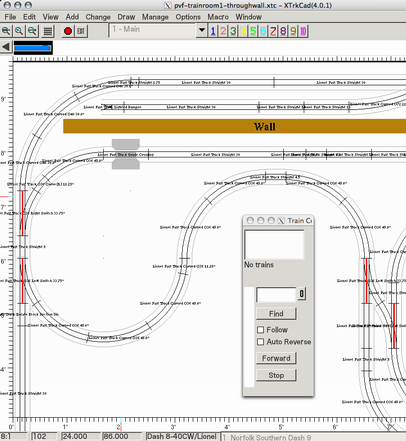
Then move your cursor down into the drawing area, click and hold, dragging the engine into place on the track (shown here in orange just below the brown wall):
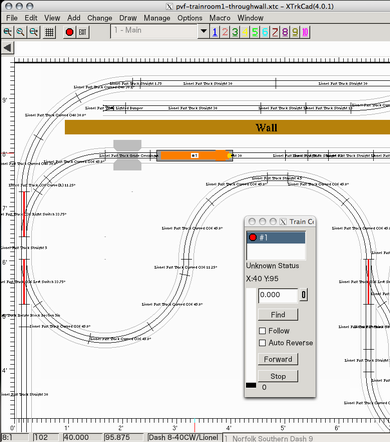
First select the engine to place in the toolbar (shown selected here in blue and black):

Then move your cursor down into the drawing area, click and hold, dragging the engine into place on the track (shown here in orange just below the brown wall):

(Page 1 of 2, totaling 24 entries)
» next page


